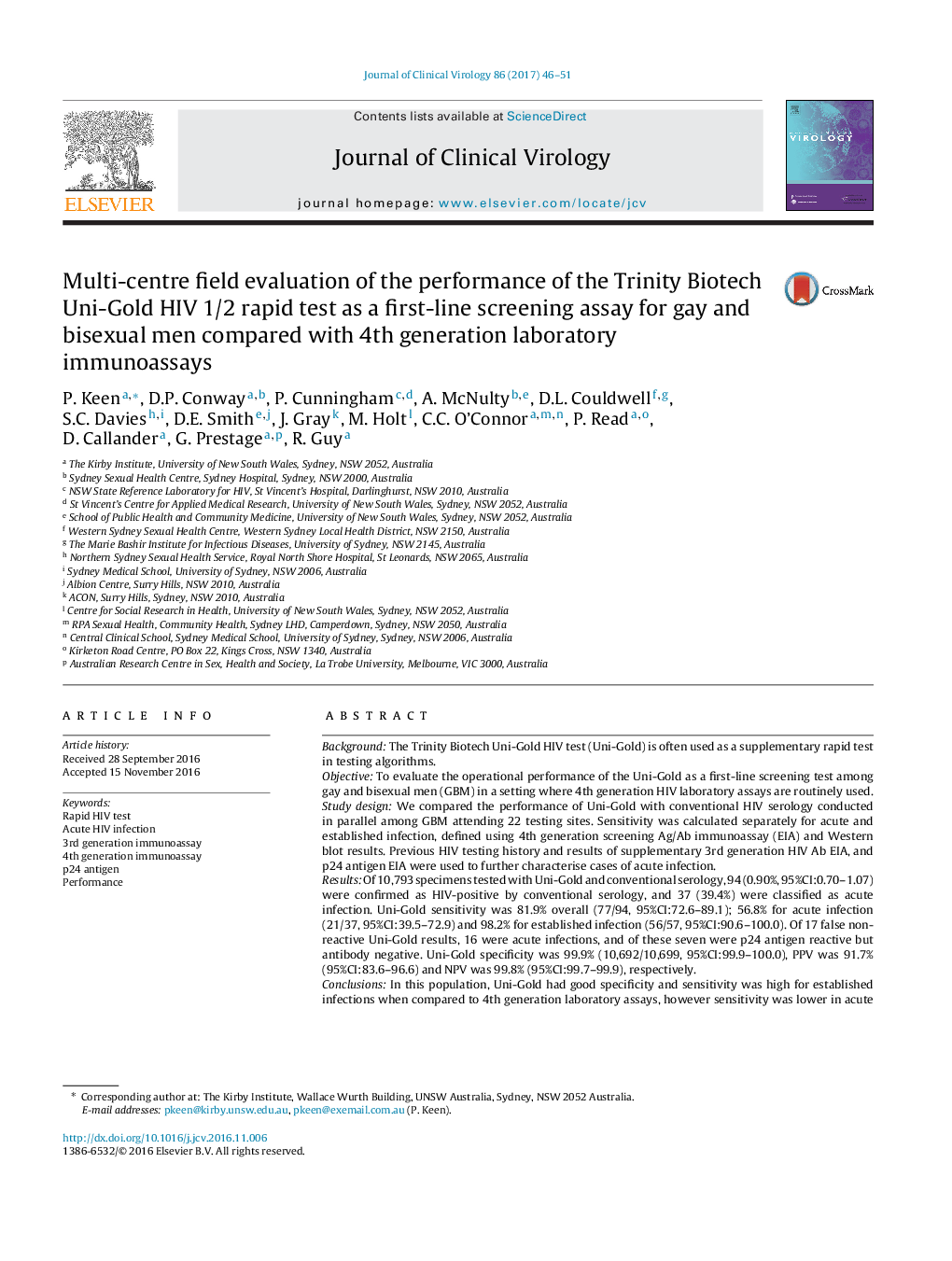| کد مقاله | کد نشریه | سال انتشار | مقاله انگلیسی | نسخه تمام متن |
|---|---|---|---|---|
| 5668024 | 1592340 | 2017 | 6 صفحه PDF | دانلود رایگان |

- Performance of The Trinity Uni-Gold (ROW) rapid HIV test was compared to 4th generation EIA.
- Of 10,793 specimens tested, 94 (0.90%, 95%CI: 0.70-1.07) were confirmed as HIV-positive.
- Uni-Gold sensitivity was 81.9% overall (77/94, 95%CI: 72.6-89.1).
- Uni-Gold sensitivity was low in cases with acute HIV infection at 56.8% (21/37, 95%CI: 39.5-72.9).
- Uni-Gold specificity was 99.9% (10,692/10,699, 95%CI:99.9-100.0).
BackgroundThe Trinity Biotech Uni-Gold HIV test (Uni-Gold) is often used as a supplementary rapid test in testing algorithms.ObjectiveTo evaluate the operational performance of the Uni-Gold as a first-line screening test among gay and bisexual men (GBM) in a setting where 4th generation HIV laboratory assays are routinely used.Study designWe compared the performance of Uni-Gold with conventional HIV serology conducted in parallel among GBM attending 22 testing sites. Sensitivity was calculated separately for acute and established infection, defined using 4th generation screening Ag/Ab immunoassay (EIA) and Western blot results. Previous HIV testing history and results of supplementary 3rd generation HIV Ab EIA, and p24 antigen EIA were used to further characterise cases of acute infection.ResultsOf 10,793 specimens tested with Uni-Gold and conventional serology, 94 (0.90%, 95%CI:0.70-1.07) were confirmed as HIV-positive by conventional serology, and 37 (39.4%) were classified as acute infection. Uni-Gold sensitivity was 81.9% overall (77/94, 95%CI:72.6-89.1); 56.8% for acute infection (21/37, 95%CI:39.5-72.9) and 98.2% for established infection (56/57, 95%CI:90.6-100.0). Of 17 false non-reactive Uni-Gold results, 16 were acute infections, and of these seven were p24 antigen reactive but antibody negative. Uni-Gold specificity was 99.9% (10,692/10,699, 95%CI:99.9-100.0), PPV was 91.7% (95%CI:83.6-96.6) and NPV was 99.8% (95%CI:99.7-99.9), respectively.ConclusionsIn this population, Uni-Gold had good specificity and sensitivity was high for established infections when compared to 4th generation laboratory assays, however sensitivity was lower in acute infections. Where rapid tests are used in populations with a high proportion of acute infections, additional testing strategies are needed to detect acute infections.
Journal: Journal of Clinical Virology - Volume 86, January 2017, Pages 46-51